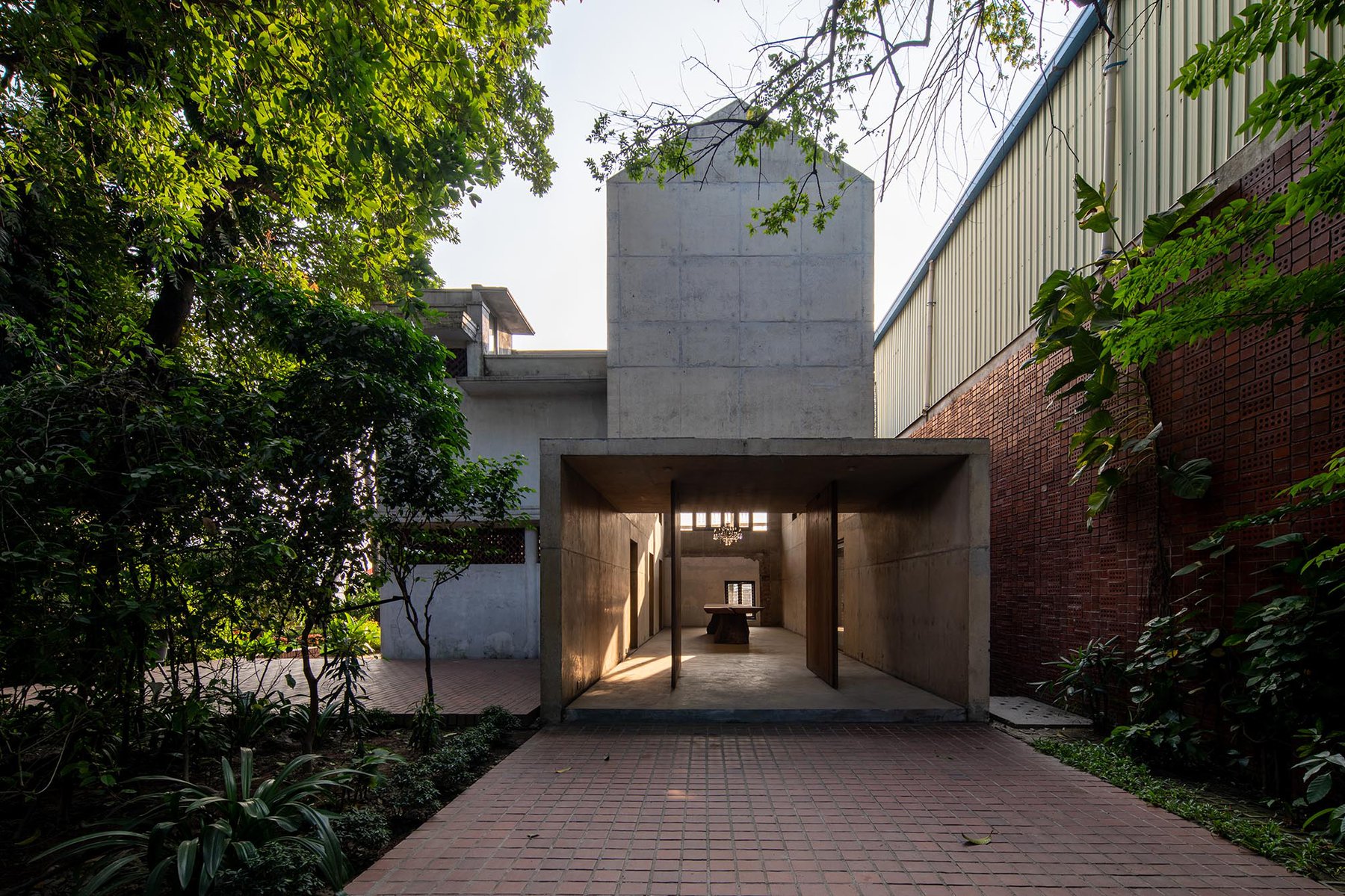
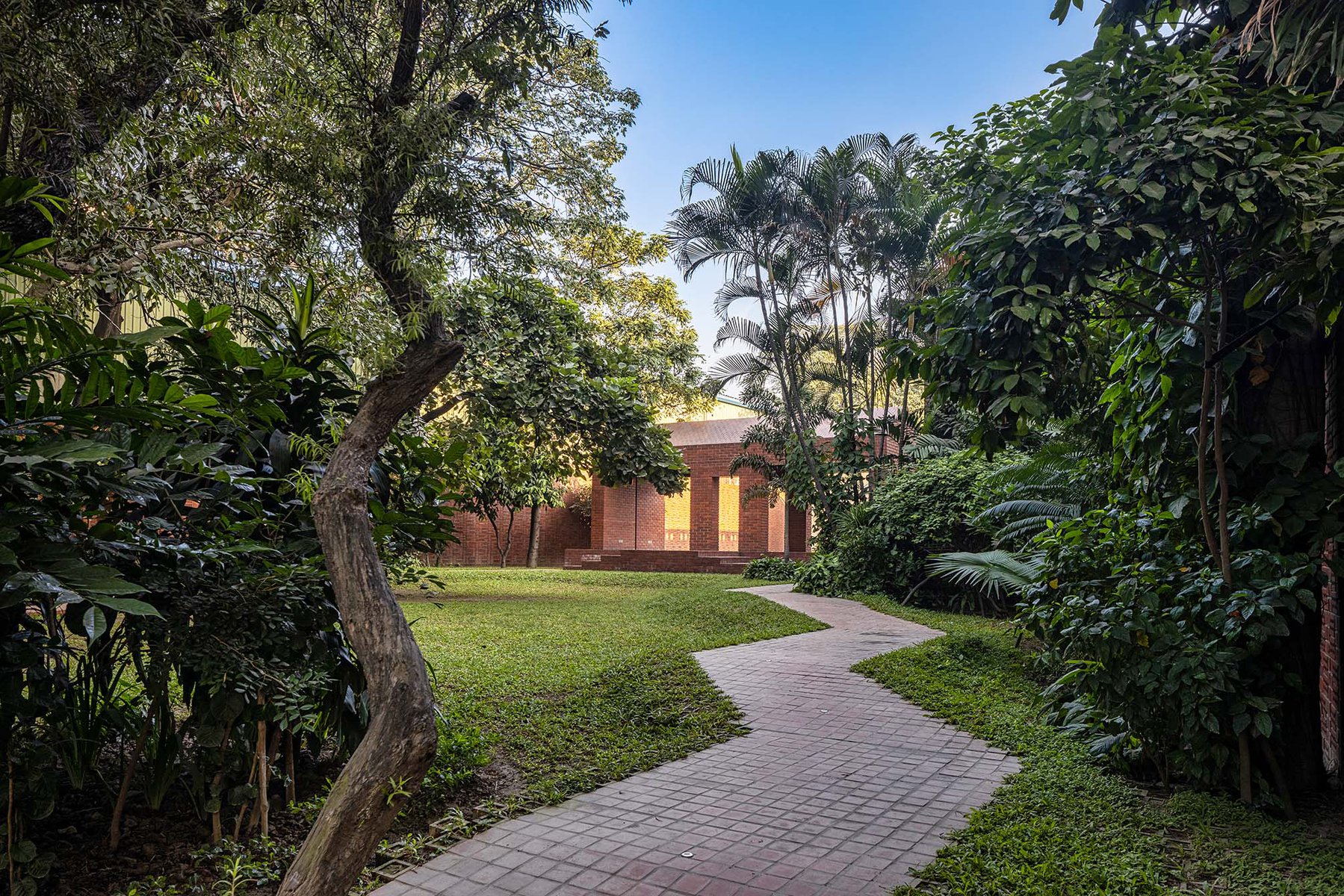
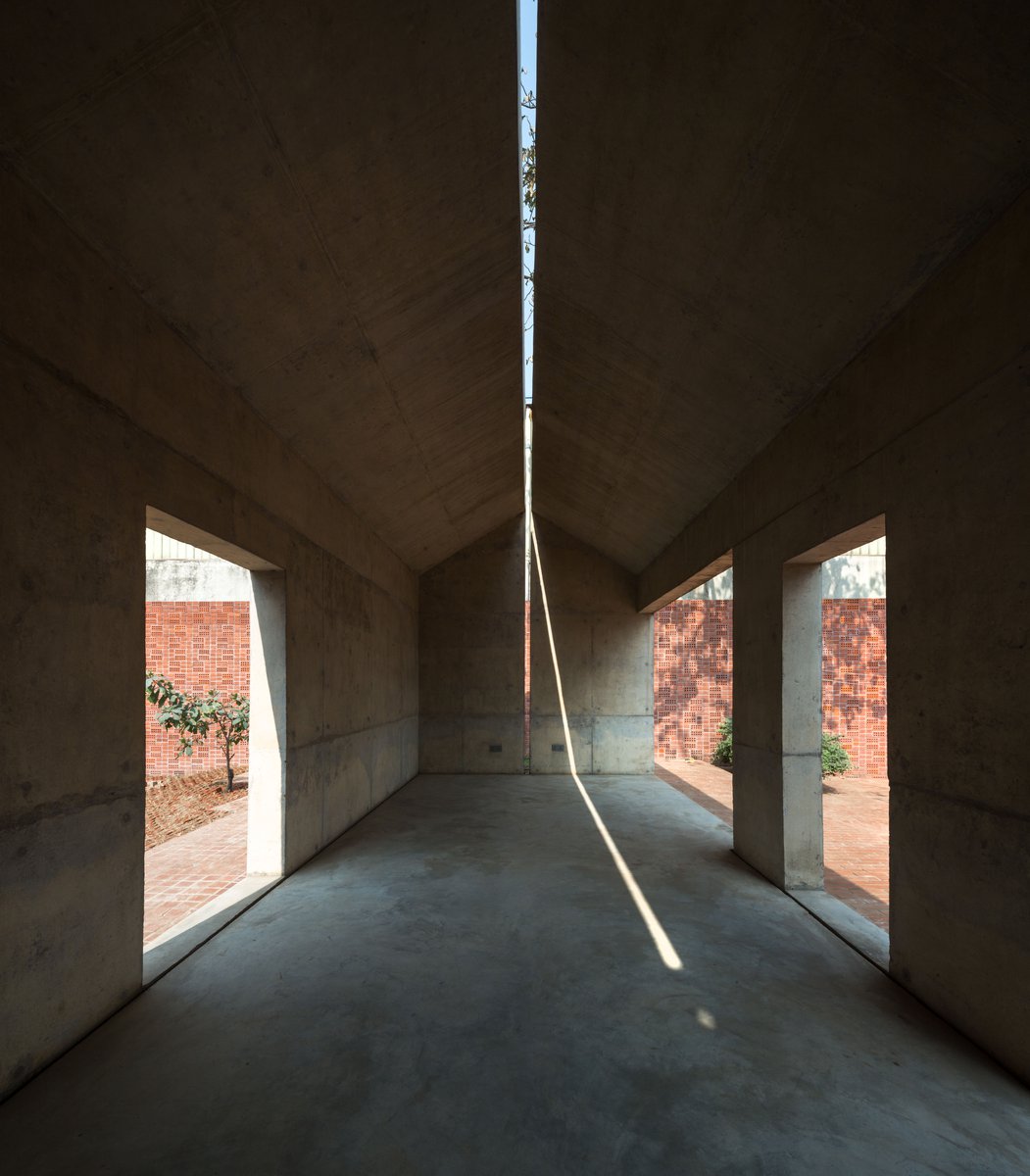
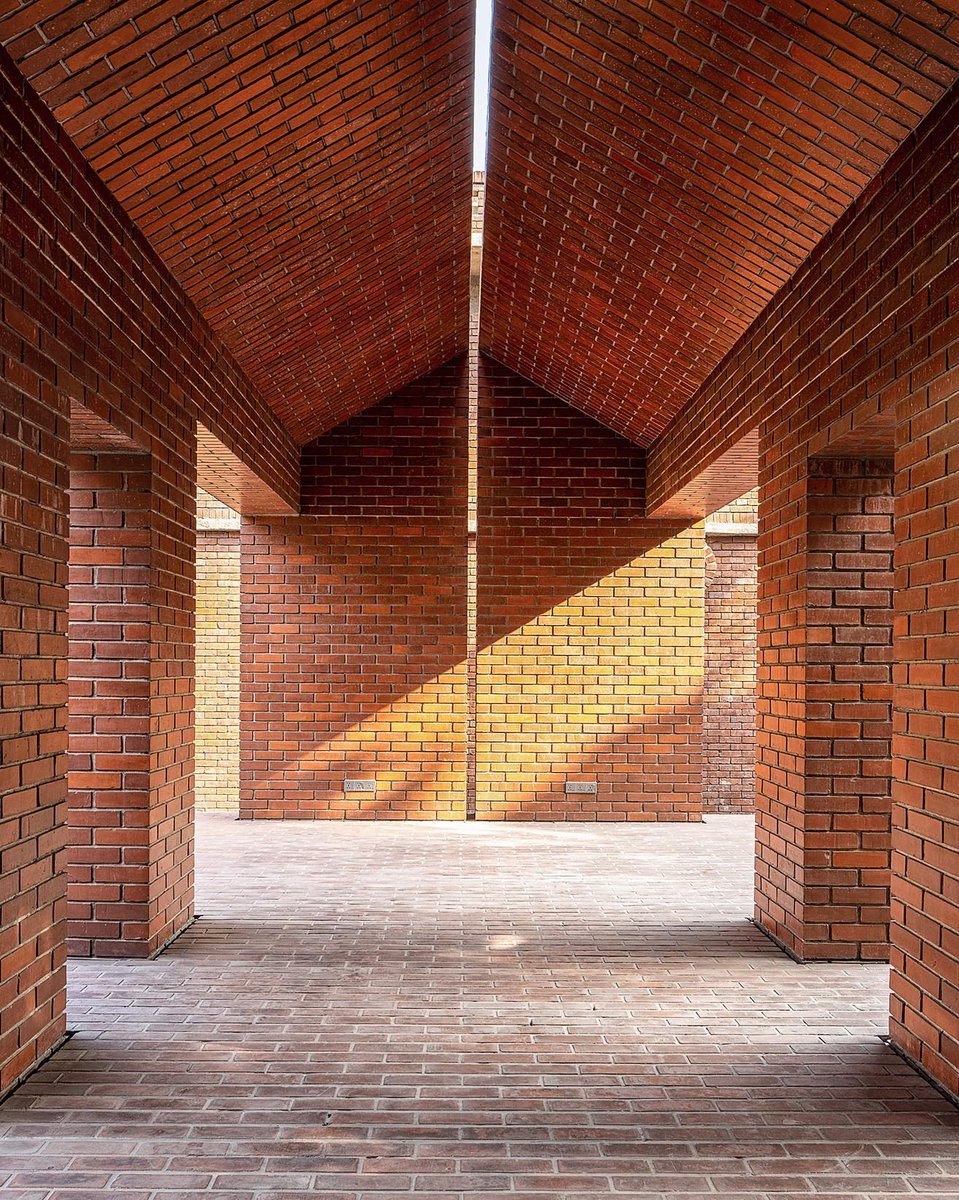
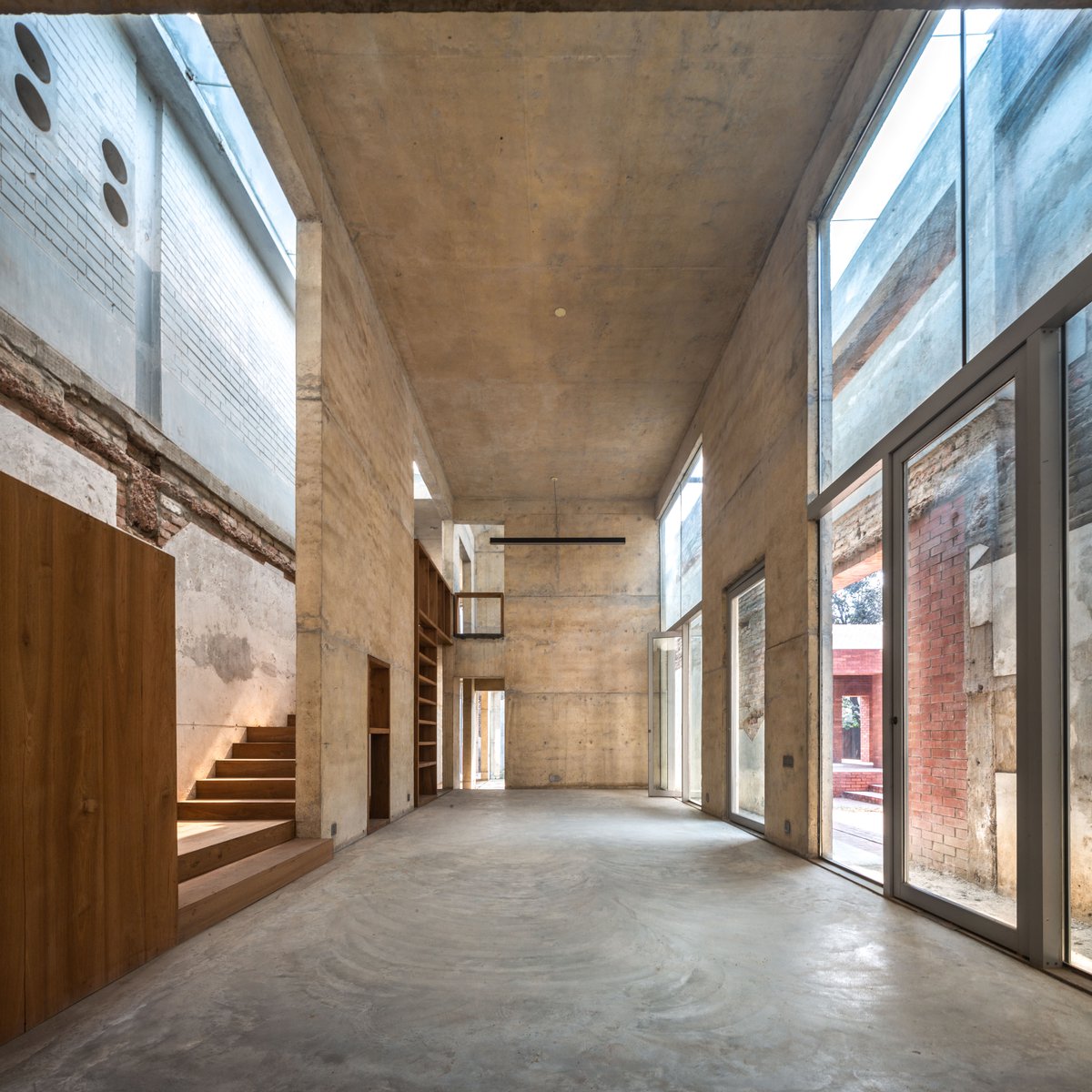
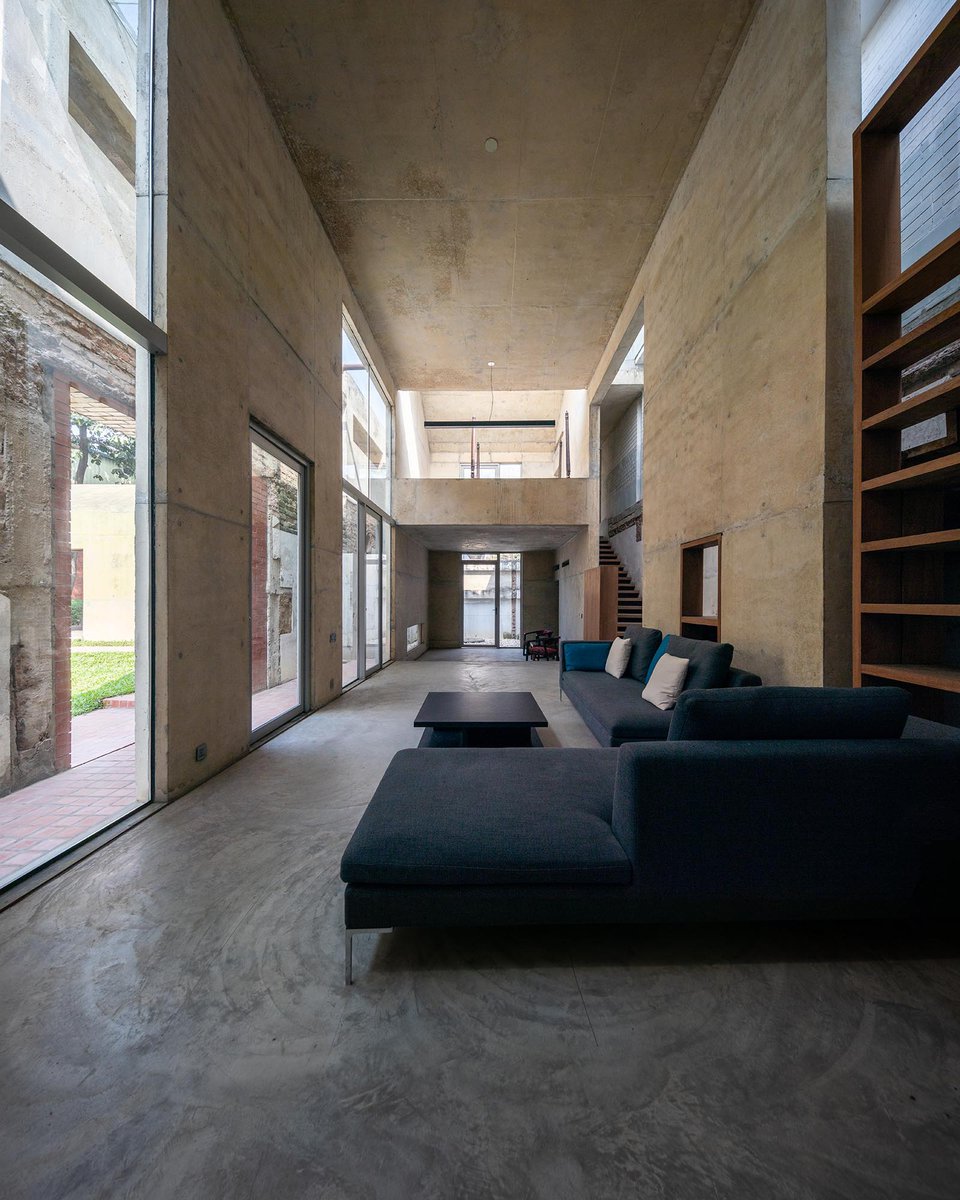
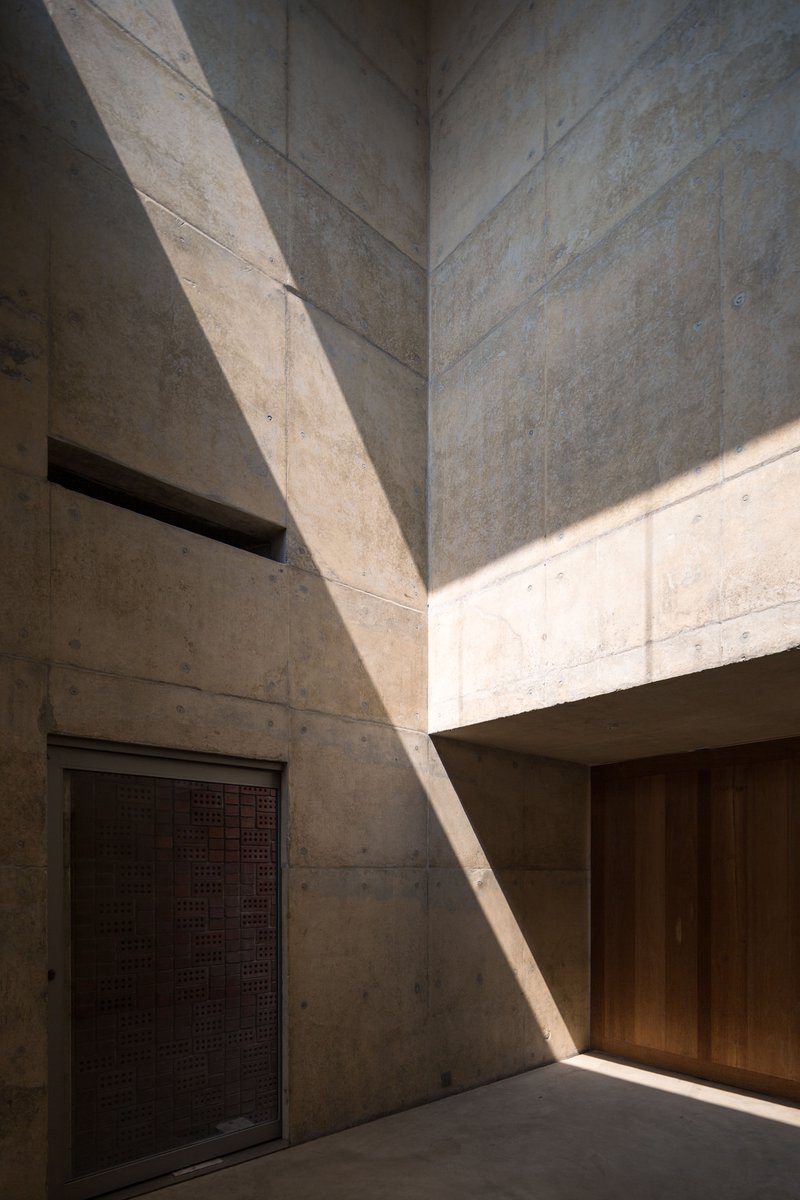
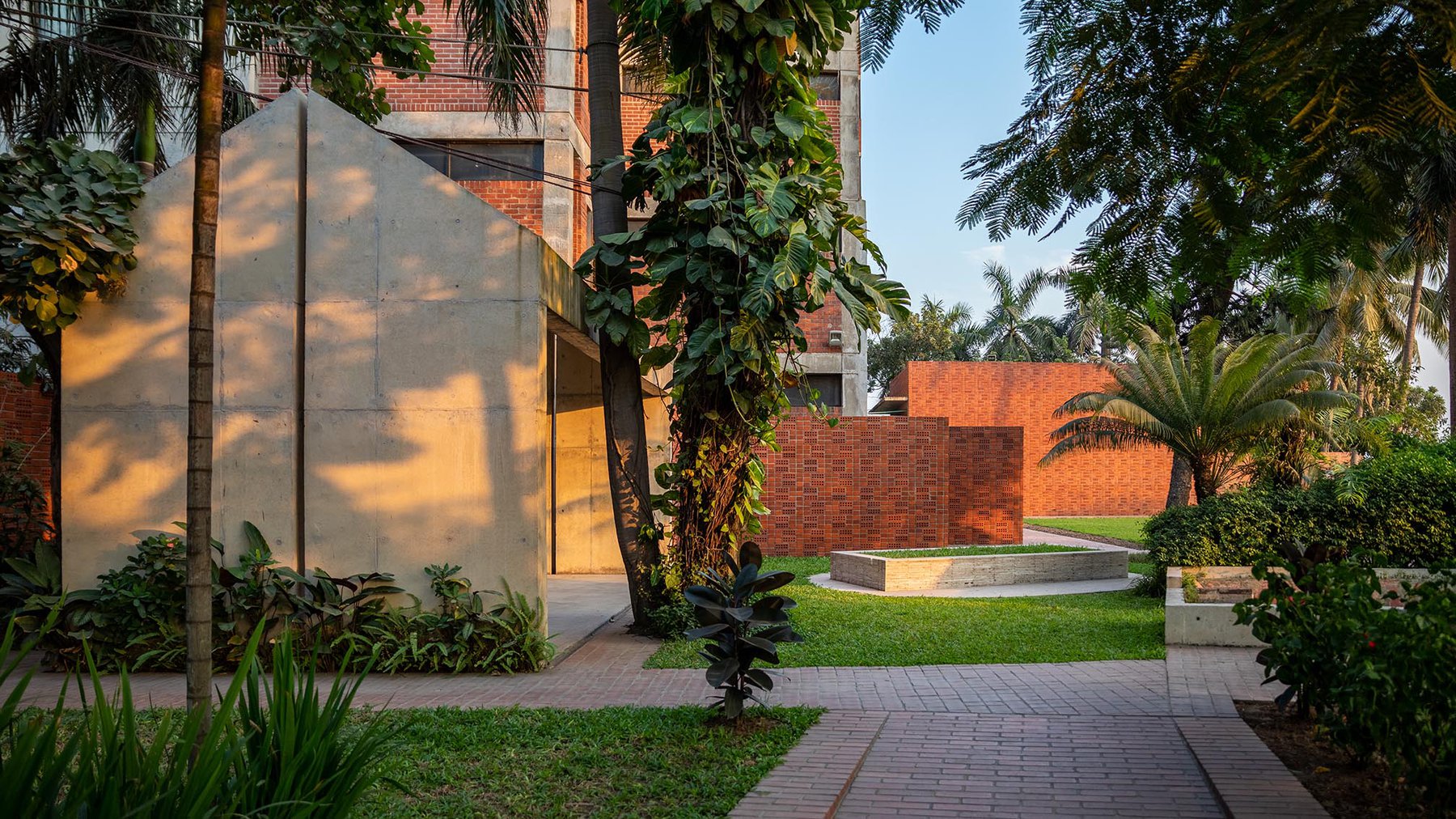
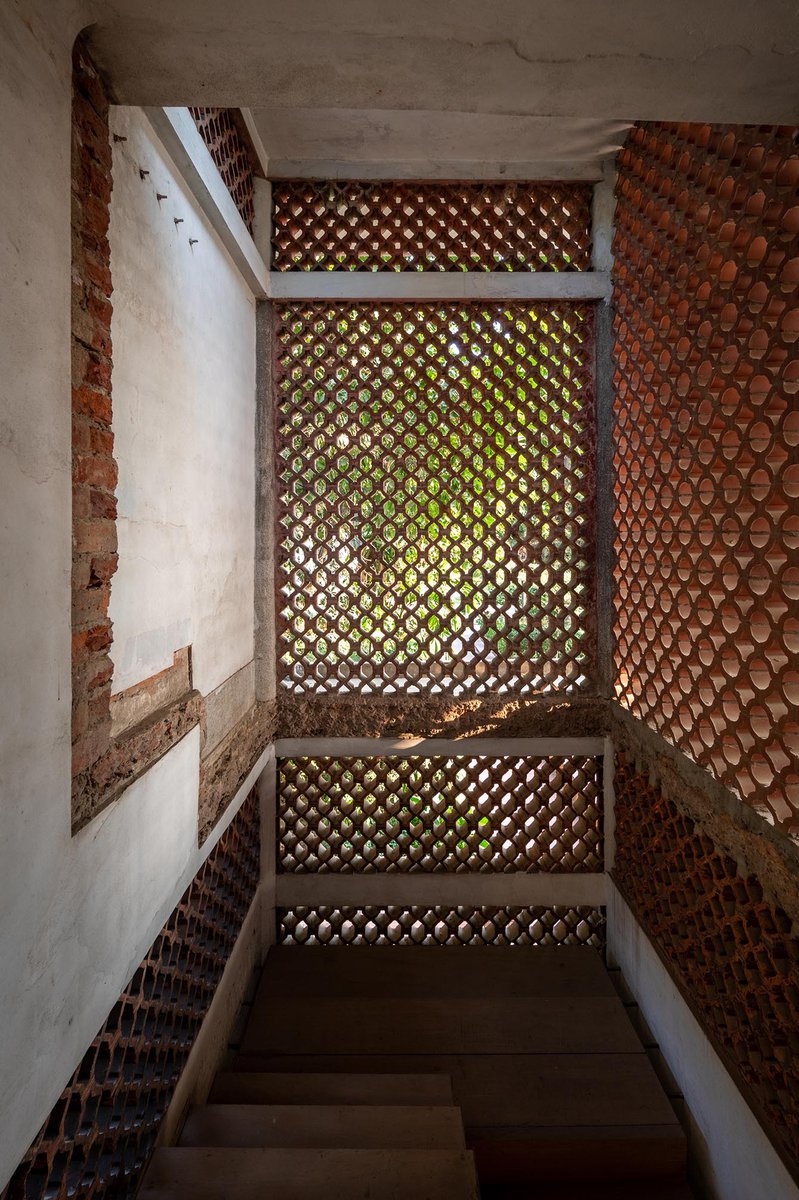
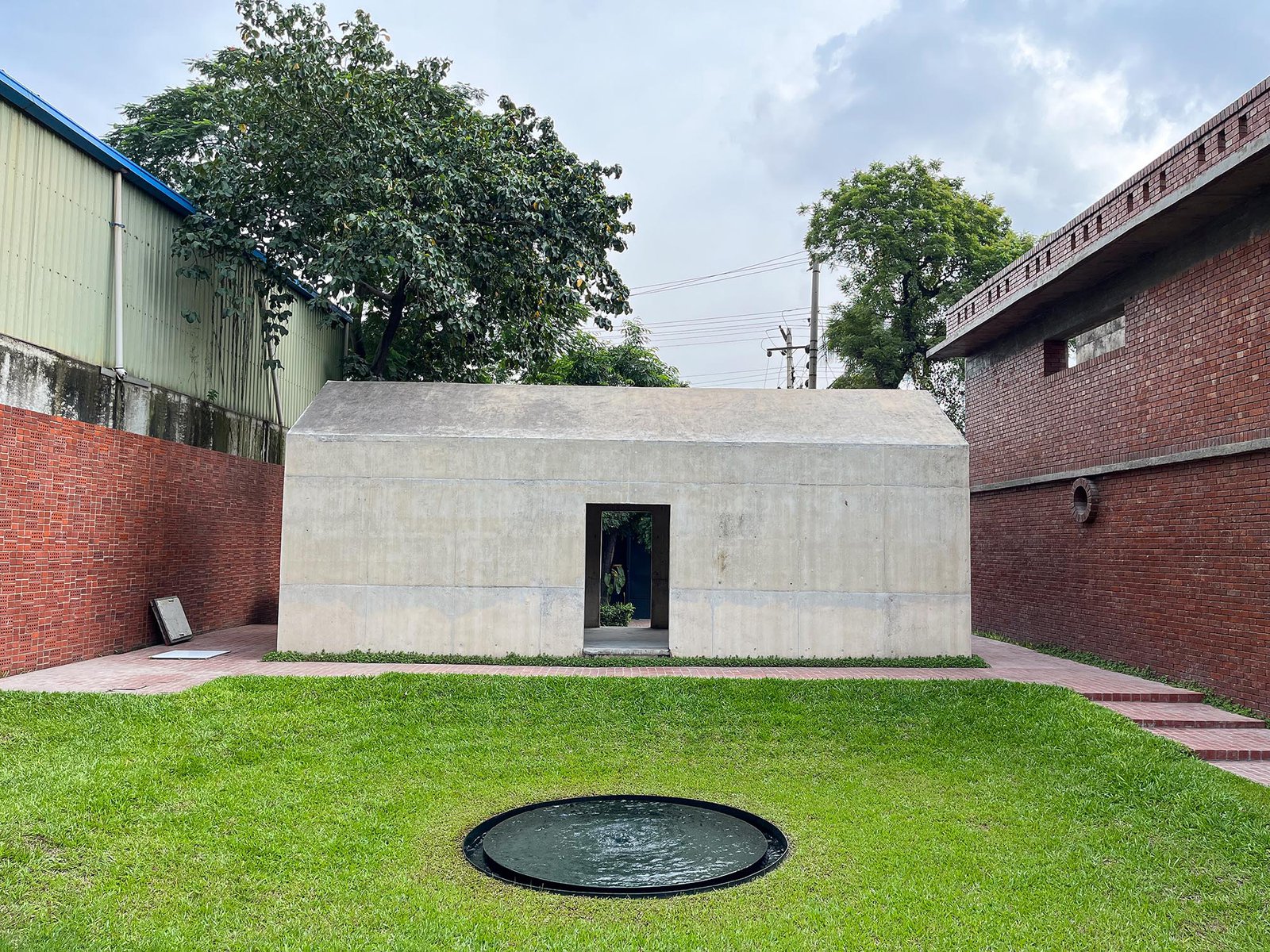
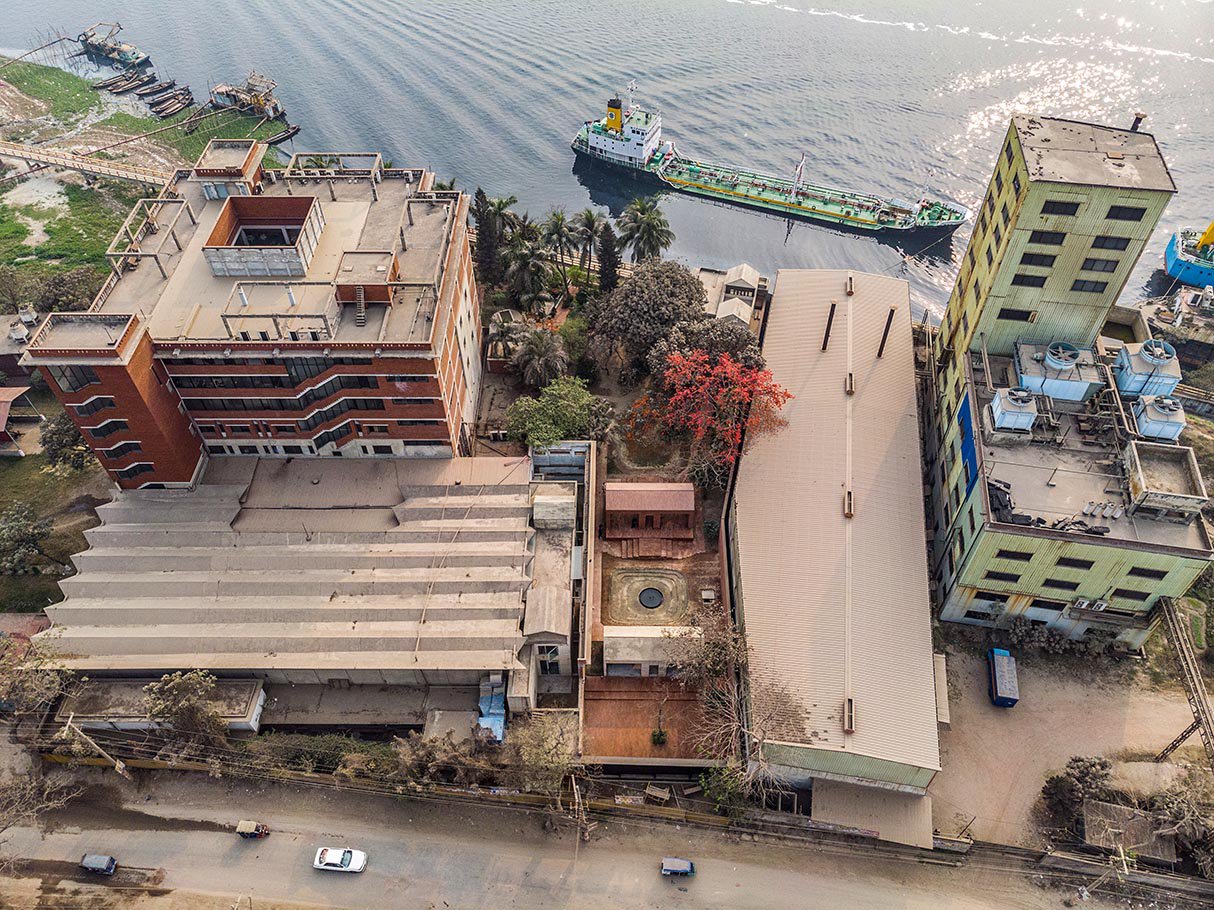

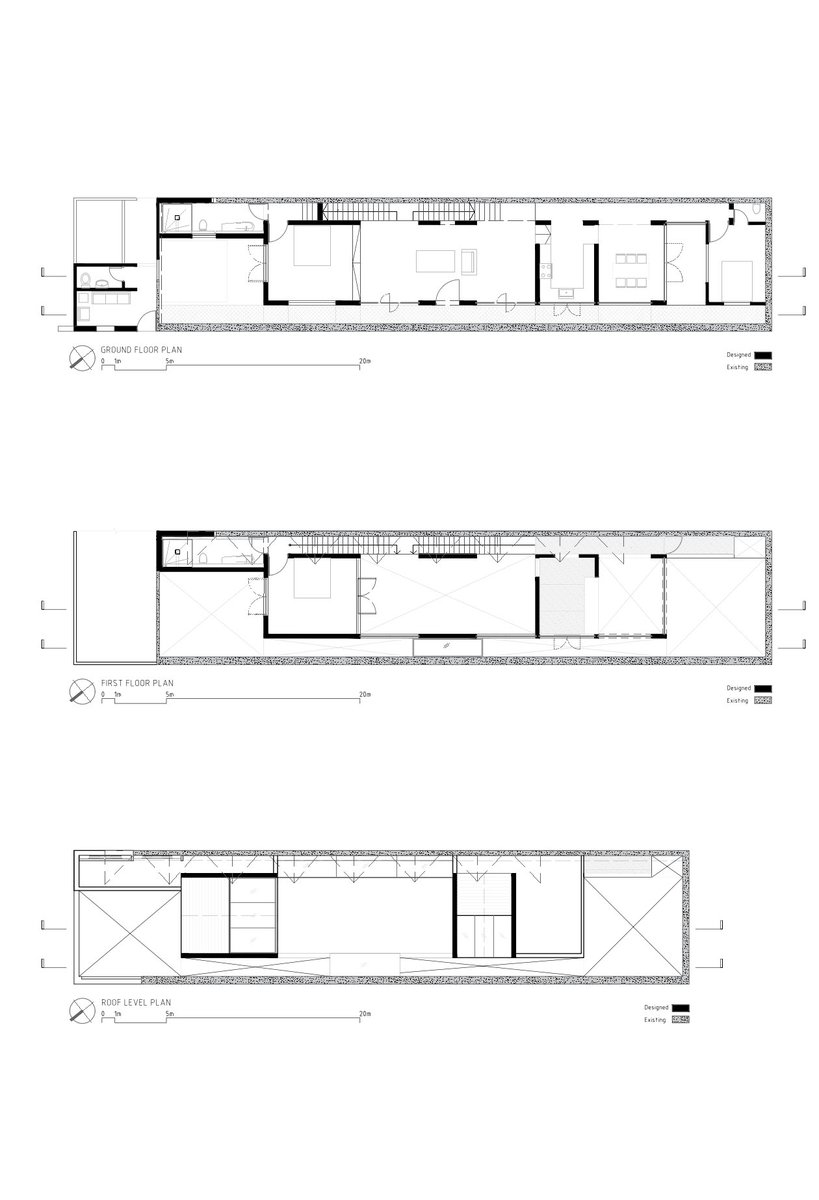
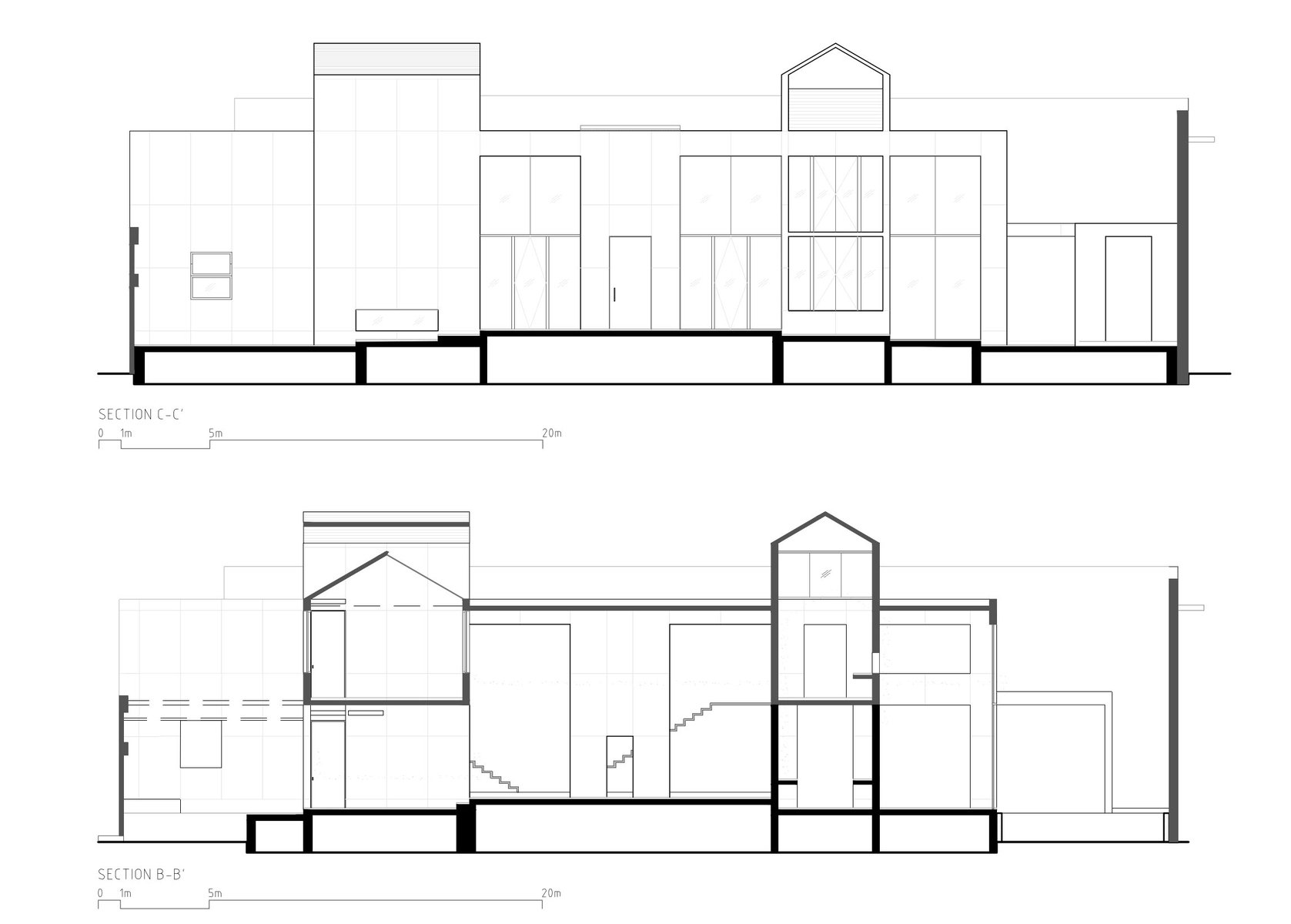
Hamidur Rahman Memorial Complex
Hamidur Rahman Memorial Complex
| Location: | Fatullah, Narayanganj District, Dhaka Division, Bangladesh |
| Architects Competition Stage: | Designed in 2014, Completed in 2020 |
| Architects Design and Implementation: | Marina Tabassum Architects |
| Client: | Hamid Group |
| Built Area: | Land Area 1.5 Acres |
The Hamidur Rahman Memorial Complex is located along the Buringanga River in Fatullah. The sprawling grounds are screened from the street by a high wall. The former Hamid family home was built in the 1960s at the western end of the site, directly on the riverbank. In the years that followed, leading to the country gaining independence, it was a secret meeting place and served as a hideout for Awami League politicians who could reach the house by boat unseen. After 1971, a cold storage facility was built on the property for commercial purposes, and nine years later, a multi-story textile factory was built. With all these developments the family home remained unused which led to its dilapidation.
Nasrul Hamid, the current Minister of State for Power, Energy and Mineral Resources, initiated the project as a place of remembrance for his father Hamidur Rahman. The latter was a founding member of the Awami League and treasurer of the party. He is buried in the southern part of the site. The grave itself is—in accordance with Muslim tradition—merely a slight mound facing Mecca. As a smaller memorial installation, a concrete pavilion with pitched roof was built adjacent to the grave. The linearity of the site was broken into courtyards by the introduction of two pavilions. The former double-story residence on the riverbank was partly restored and partly demolished to allow space for a private museum. The plan is to exhibit historical memorabilia in this house. In the northern part of the property, the raw material store of the textile factory has been repurposed as a weekend house with two bedrooms, two bathrooms and a loft-like living area, which was added to the factory for the family.
The overall Hamidur Rahman Memorial complex has the character of an open-air architectural promenade of separate structures. Their abstraction makes them resemble a sculpture park that visitors can walk through.